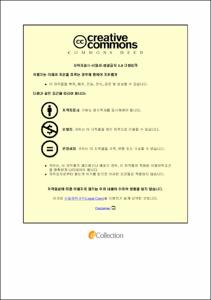9% Ni강의 Alloy 625 용접재료 적용에서 Super-TIG와 FCAW의 고온균열과 생산성 비교
- Abstract
- 최근 IMO(International Maritime Organization)는 황산화물 배출규제 및 온실가스 배출규제를 강화함에 따라 청정연료인 LNG(Liquefied natural gas)의 사용이 세계적으로 급증하여 LNG 저장탱크 및 LNG 연료탱크의 수요가 증가하고 있다.
LNG 탱크 제조에서는 9% Ni강이 사용되고 있으며 그 용접 재료로 Alloy 625 와이어 혹은 하스텔로이계 와이어를 사용하고 있다. Ally 625 용접와이어를 사용한 FCAW용접 공정에서 생산성 증가를 위해 전류를 올리게 되면 고온균열이 자주 발생할 뿐만 아니라 아크불안정으로 융합불량과 같은 결함이 발생한다.
본 연구에서는 FISCO test를 통해 9% Ni강 용접에서 Alloy 625 용접 와이어를 사용한 FCAW와 Super-TIG용접의 고온균열 발생 특성을 비교하였다. 또한 FISCO test 결과 고온균열이 발생되지 않은 영역에서 용접 생산성을 비교하였다.
Recently, demand for LNG storage and fuel tanks increases due to the International Maritime Organization (IMO) regulations on sulfur oxides and greenhouse gas emission. In the production of LNG tanks, 9% Ni steel is used and Alloy 625 or Hastelloy wires are used as the welding material. In the FCAW process using Alloy 625 consumables, if the high current is used to increase the productivity, not only hot cracking occurs frequently but also welding defects such as lack of fusion occur due to arc instability. In this study, the hot cracking characteristics of FCAW and GTAW using Alloy 625 consumables in 9% Ni steel welding were compared through FISCO hot cracking test. In addition, welding productivity was compared under the condition that hot cracking did not occur in FISCO hot cracking test.
- Issued Date
- 2019
- Awarded Date
- 2019. 2
- Type
- Dissertation
- Publisher
- 부경대학교
- Alternative Author(s)
- Ki-Beom Na
- Affiliation
- 부경대학교 대학원
- Department
- 대학원 신소재시스템공학과
- Advisor
- 조상명
- Table Of Contents
- 1. 서 론 1
1.1 연구 배경 및 필요성 1
1.2 연구 목적 및 개요 2
2. 이론적 배경 3
2.1 TIG(Tungsten Inert Gas) 용접 3
2.1.1 TIG의 정의 3
2.1.2 TIG의 원리 3
2.1.3 TIG용접의 장단점 6
2.2 TIG 플라즈마 스트림 이론(Theory of TIG Plasma stream) 7
2.2.1 플라즈마 스트림 이론의 개념 7
2.2.2 플라즈마 스트림 이론의 관점에서 본 Super-TIG용접 9
2.3 고온균열(Hot crack) 11
2.3.1 응고균열(Solidification Crack) 11
2.3.2 Alloy 625의 응고균열 15
2.4 입열량과 입열량비(Heat input and heat input ratio) 16
2.4.1 입열량 16
2.4.2 입열량비 16
3. 9% Ni강의 Alloy 625 용접재료 적용에서 FCAW와 Super-TIG의 고온균열 발생특성 비교 17
3.1 서언 17
3.2 FCW 625를 통한 FISCO 장치의 검증 17
3.2.1 실험 재료 17
3.2.2 실험 방법 17
3.2.3 FCW FISCO test 검증 결과 21
3.3 Super-TIG와 FCAW의 고온균열 발생특성 비교 25
3.3.1 실험 재료 25
3.3.2 실험 방법 26
3.3.3 실험 결과 및 고찰 27
3.4 Super-TIG의 고온균열 발생특성 범위 확장 실험 32
3.4.1 실험 재료 32
3.4.2 실험 방법 33
3.4.3 실험 결과 및 고찰 35
3.5 Super-TIG의 입열량비에 따른 고온균열 발생특성 비교 42
3.5.1 실험 재료 42
3.5.2 실험 방법 43
3.5.3 실험 결과 및 고찰 45
3.6 결언 48
4. Alloy 625 용접재료 적용에서 FCAW와 Super-TIG의 생산성 비교 49
4.1 서언 49
4.2 FCAW 생산성 검토 49
4.2.1 실험 재료 49
4.2.2 실험 방법 50
4.2.3 실험 결과 및 고찰 51
4.3 Super-TIG 용접의 Stringer bead 생산성 검토 58
4.3.1 실험 재료 58
4.3.2 실험 방법 59
4.3.3 실험 결과 및 고찰 60
4.4 Super-TIG 용접 Oscillation bead 생산성 검토 64
4.4.1 실험 재료 65
4.4.2 실험 방법 65
4.4.3 실험 결과 및 고찰 66
4.5 결언 71
5. 결론 73
- Degree
- Master
- Files in This Item:
-
-
Download
 9% Ni강의 Alloy 625 용접재료 적용에서 Super-TIG와 FCAW의 고온균열과 생산성 비교.pdf
기타 데이터 / 1.53 MB / Adobe PDF
9% Ni강의 Alloy 625 용접재료 적용에서 Super-TIG와 FCAW의 고온균열과 생산성 비교.pdf
기타 데이터 / 1.53 MB / Adobe PDF
-
Items in Repository are protected by copyright, with all rights reserved, unless otherwise indicated.